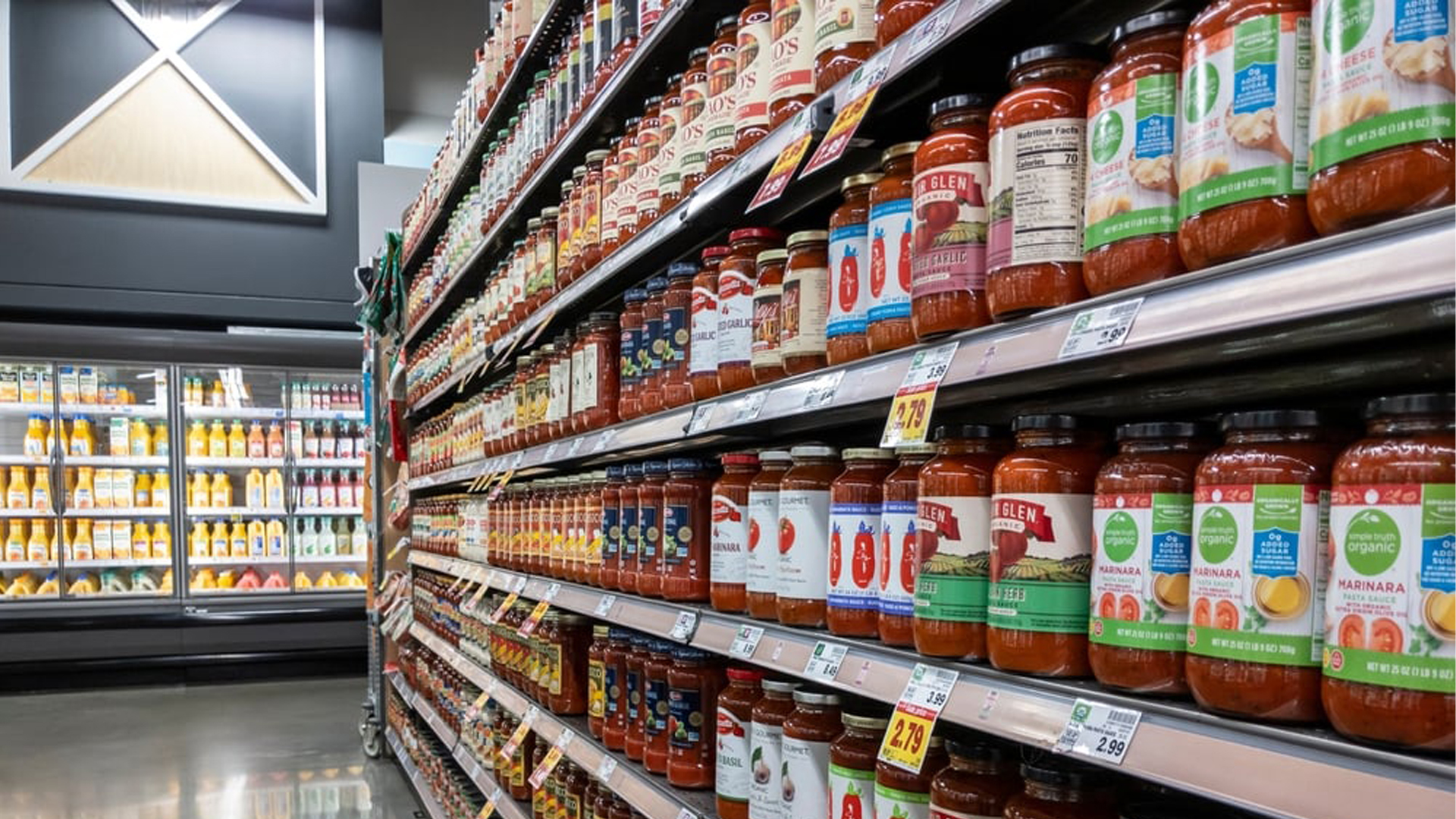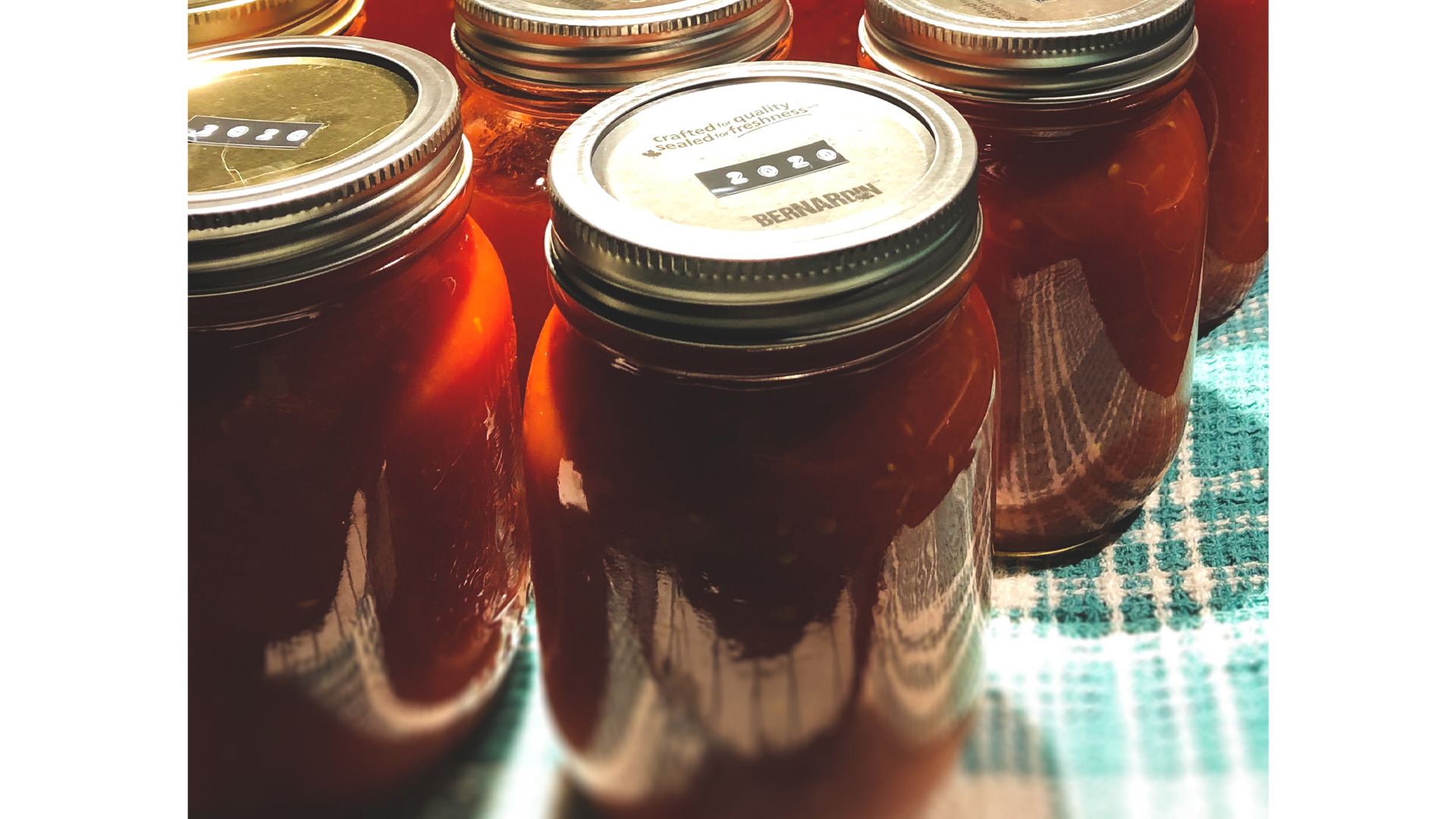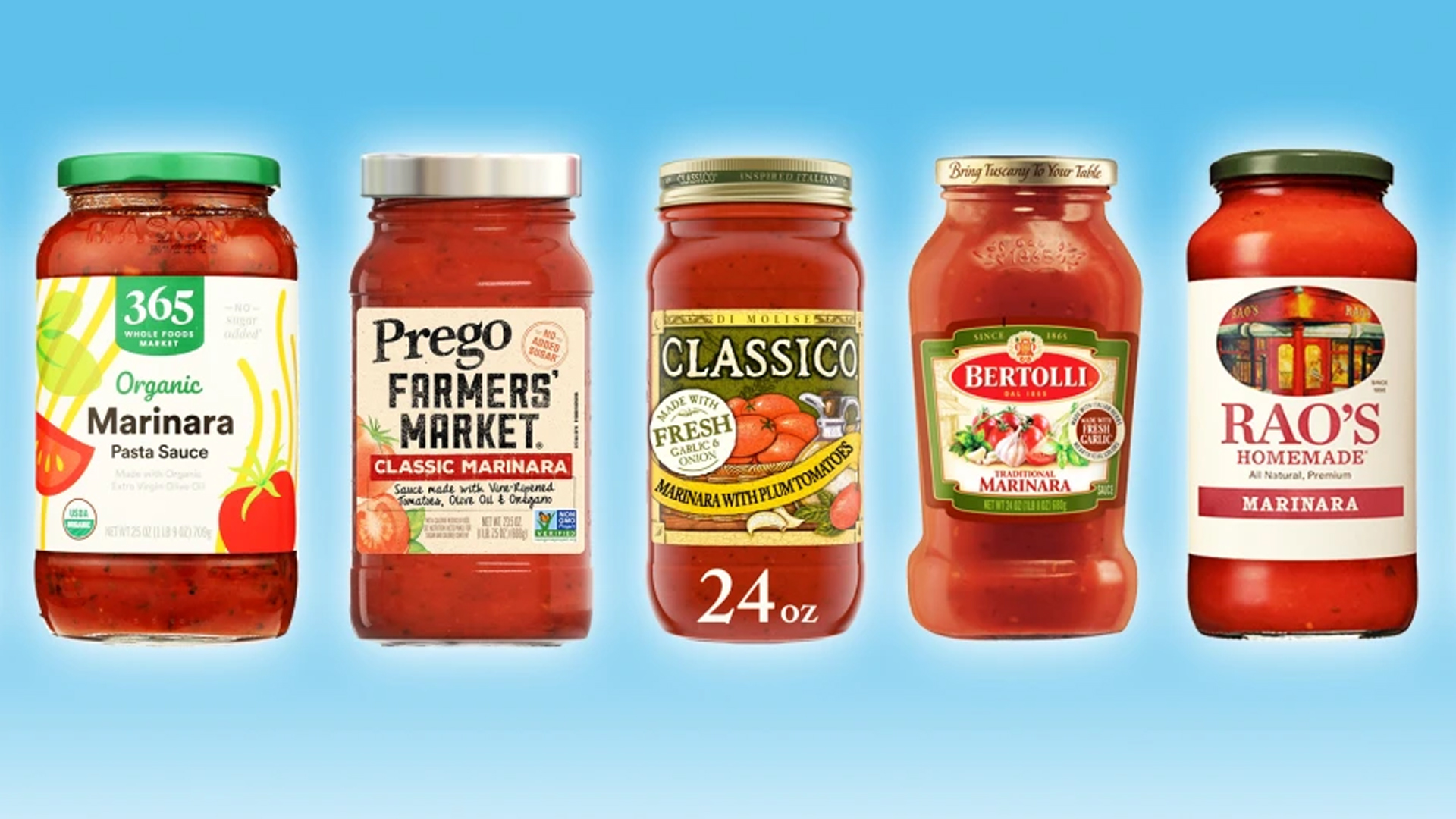Whether you call it sauce or gravy, few things are more sacred to Italian Americans than a treasured family recipe. Tossing pasta with sauce from a jar might even be seen as sacrilegious - don't tell Nonna. But, according to market data from Statista, two thirds of Americans consume jarred tomato sauce.
Jarred pasta sauce took off in the 1970s with national brands from companies like RAGÚ and Prego, but a century before that, Americans were far more likely to eat tomato ketchup than tomato sauce. Even after Italian immigrants first began arriving in the 1880s, tomato sauce remained an ethnic product served in immigrant homes or Italian American restaurants. Over time mass production has turned jarred tomato sauce into big business.

The Canning Industry
Canned fruits and vegetables first entered large-scale industrial production in the 19th century. At the time, these foods offered a revolutionary way of eating. Fruits and vegetables spoil easily, but industrial canning allowed these items to be preserved and available all year round. At first, a luxury, the price of canning fell quickly, especially as a result of government contracts for canned food during the Civil War.
Commercial canning of tomatoes began in 1847 in Jamesburg, New Jersey, and helped make the state a leader in canned tomato production. Before the canning process was perfected, out-of-season tomatoes were impossible to find. Instead, Italians typically dried tomatoes on rooftops turning the fruits into tomato paste, which could be stored for longer periods of time.
New Jersey, and its tomato industry, were also home to the Campbell Soup Company, first founded as a ketchup manufacturing concern, made famous by canned tomato soup, and eventually launching the Prego line of canned sauces in the 1970s.

(Photo Credit: restaurantclicks.com)
From Old Milk Jars to Army Contracts
In the 1920s, an Italian-born chef based in Cleveland began selling sauces in recycled glass milk jars. Chef Ettore Bioardi opened his first restaurant, Il Giardino d'Italia, in 1924 and customers regularly requested his tomato sauce leading to the improvised jarring solution. Demand was high enough that he eventually built a processing plant in 1928. The factory initially produced a simple tomato sauce, a mushroom sauce, and a spicy Neapolitan sauce.
However, despite the demand, Bioardi's salesman complained that too many potential customers were struggling to pronounce the complicated Italian name. Bioardi eventually changed the brand name to what we know today as Chef Boyardee.
Boyardee pioneered a number of pre-packaged foods. He sold a pizza kit with cheese, sauce, and dough, and also started producing a line of canned pasta products. A government contract during World War II meant plenty of American soldiers tasted spaghetti and sauce for the first time, helping make the brand a success in the post-war period.

Tomato Sauce Takes the Nation
In 1937, Giovanni and Assunta Cantisano launched a small business selling tomato sauce out of their Rochester home. They cooked sauce in their kitchen and their children delivered it to local stores. According to Alan Morrell at the Democrat & Chronicle, the family launched the RAGÚ brand of sauces in order to feed the six children.
RAGÚ continued growing and by 1946 they opened a factory allowing them to scale up for mass production. They steadily grew the business. In 1969, the family sold the company to Chesebrough-Pond, a Connecticut-based food conglomerate that brought the line of sauces to a national distribution model. For years they led the market with a little less than half the rapidly expanding sector.

(Photo Credit: americastestkitchen.com)
The Perfect Sauce(s)
Campbell's line of Prego sauce was struggling to compete with RAGÚ, even with the massive growth in the jarred sauce market. The turning point for Prego came in the 1980s when they introduced chunky versions of the sauce. Campbell Soup Company hired Howard Moskowitz, a data scientist who argued that there was no such thing as a perfect product for every customer, but rather several ideal products for different groups of customers, a process known as horizontal segmentation. In a 2004 Ted Talk, journalist, and speaker Malcolm Gladwell explains consumer choice and how Moskowitz developed a plan to create enough varieties of pasta sauce to meet the desires of many different types of consumers rather than focusing on a single perfect sauce.
Prego's line of Chunky tomato sauce is a direct result of Moskowitz's research and is used to illustrate why food and beverage companies are now launching many different recipes of their core products.

(Photo Credit: eataly.com)
Jarred Sauce Goes Gourmet
More recently, gourmet jarred tomato sauce from high-end restaurants has launched a whole new kind of sauce war. Red sauce joints, both classics like Rao's, Michaels, Il Mulino, and new upstarts like Carbone, Carmine's, and Meatball Shop are all getting into the jarred sauce game.
Many of the restaurants are difficult to get reservations for, and some like Rao's, are nearly impossible. Jarring the restaurants' sauces allows these businesses to connect with consumers even if they can't dine in the restaurant. Most of these sauces cost two or three times as much mass-market national sauces, but often that is the point: an affordable luxury, according to Bettina Makalintal writing at Eater. With the cheaper brands, these gourmet sauces also come in a wide variety of flavors including combinations like Arrabbiata, Vodka Sauce, and Diavolo.Ian MacAllen
Ian MacAllen is America Domani's Senior Correspondent and the author of Red Sauce: How Italian Food Became American. He is a writer, editor, and graphic designer living in Brooklyn. Connect with him at IanMacAllen.com or on Twitter @IanMacAllen.

